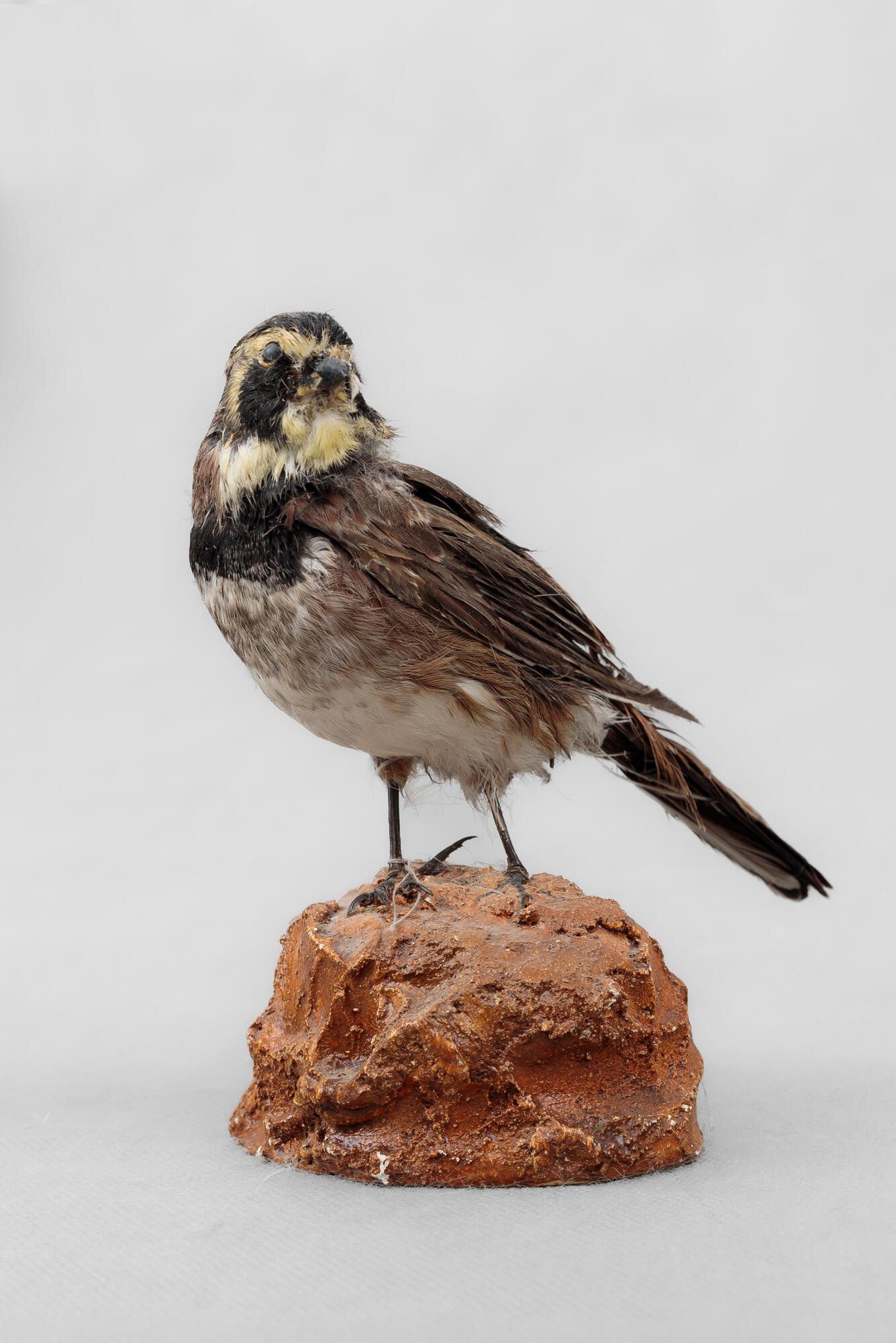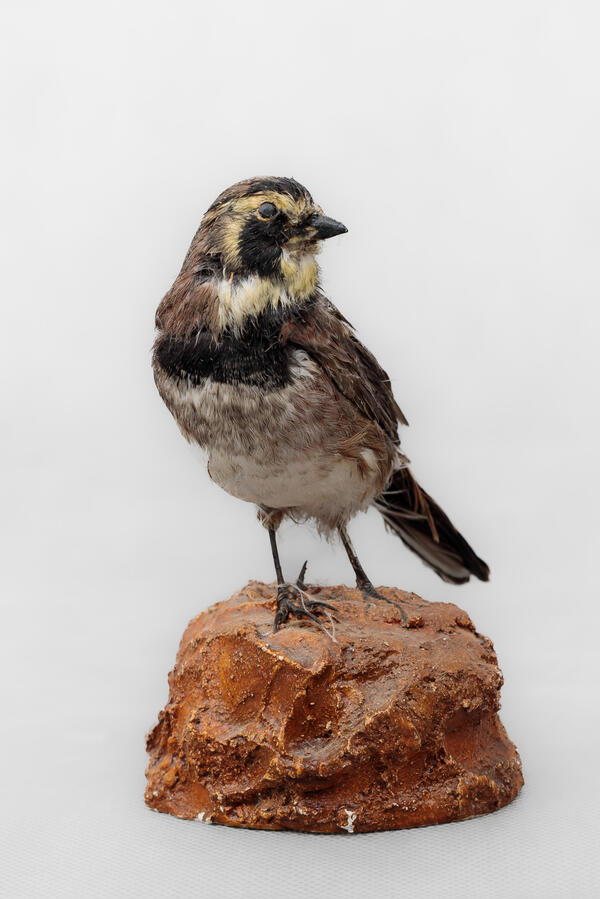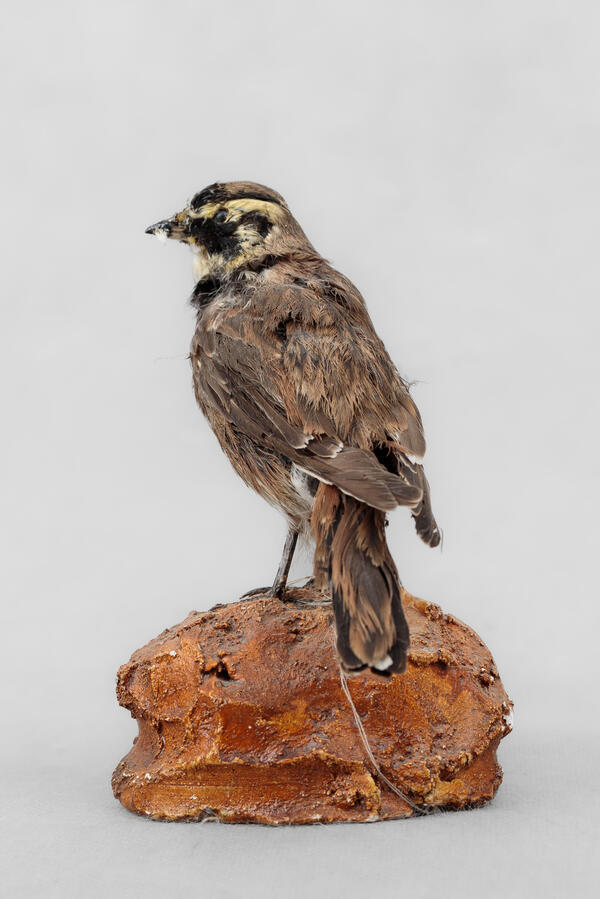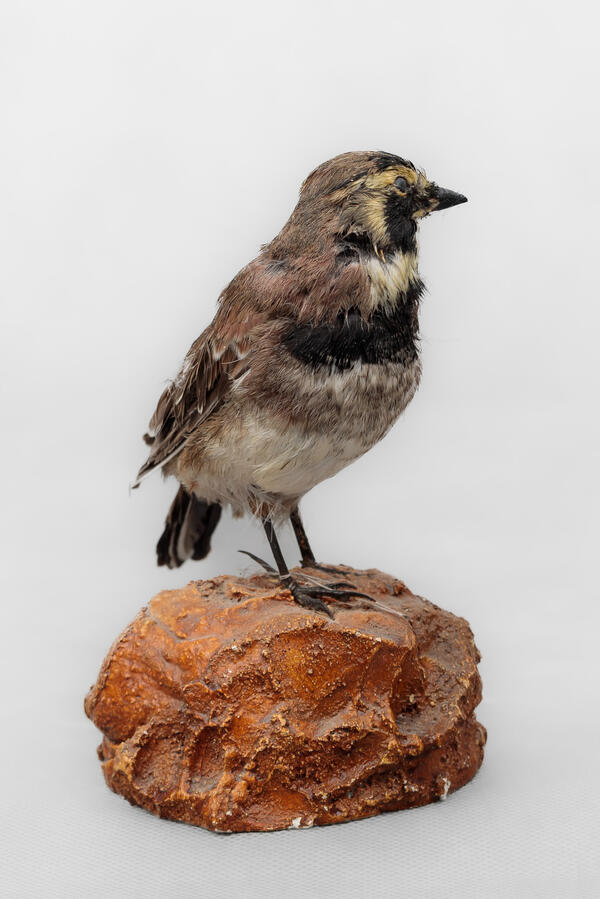One of the taxidermy mounts in the Uray City Historical Museum is the horned lark. This is is a species of lark in the family Alaudidae, only slightly larger than the sparrow.
These small birds usually weigh no more than 70 grams, and some species barely reach two and a half dozen grams at all. The length of the body from head to tail, depending on the species, ranges from 10 to 21 centimeters.
The head of the horned lark is relatively large, as is the beak, which has a noticeable curvature. Larks are unique in their melodic song singing: few birds can make such beautiful natural sounds.
The most exciting sounds are made in flight. Most often, the bird’s song can be heard early in the morning or in the evening, and especially during the period when spring comes and the last frosts recede. Despite the singing talent, this bird has a very inconspicuous appearance, since it lives in an open area, on the ground. Both males and females have the same brownish plumage reminiscent of the soil.
Few predators can fly as skillfully as the lark. The unique structure of the body — the tiny birds have large wings and a short tail — makes the horned larks extremely fast. When alarmed, larks plunge to the ground and hide in the tall grass.
Larks feed on insects and seeds. They inhabit areas where tall grass and cereals grow, as well as steppes, including next to farmland areas, where they feel quite comfortable. These birds avoid forests, but can be found in mountainous areas.
Larks often hide their nests in the bushes in an isolated pit. The nesting season lasts from June to July. At this time, the female incubates a clutch of four eggs from 10 to 14 days. The chicks stay in the nest for 9 to 12 days. Both males and females are involved in feeding the chicks. In winter, larks migrate to warm countries.
These small birds usually weigh no more than 70 grams, and some species barely reach two and a half dozen grams at all. The length of the body from head to tail, depending on the species, ranges from 10 to 21 centimeters.
The head of the horned lark is relatively large, as is the beak, which has a noticeable curvature. Larks are unique in their melodic song singing: few birds can make such beautiful natural sounds.
The most exciting sounds are made in flight. Most often, the bird’s song can be heard early in the morning or in the evening, and especially during the period when spring comes and the last frosts recede. Despite the singing talent, this bird has a very inconspicuous appearance, since it lives in an open area, on the ground. Both males and females have the same brownish plumage reminiscent of the soil.
Few predators can fly as skillfully as the lark. The unique structure of the body — the tiny birds have large wings and a short tail — makes the horned larks extremely fast. When alarmed, larks plunge to the ground and hide in the tall grass.
Larks feed on insects and seeds. They inhabit areas where tall grass and cereals grow, as well as steppes, including next to farmland areas, where they feel quite comfortable. These birds avoid forests, but can be found in mountainous areas.
Larks often hide their nests in the bushes in an isolated pit. The nesting season lasts from June to July. At this time, the female incubates a clutch of four eggs from 10 to 14 days. The chicks stay in the nest for 9 to 12 days. Both males and females are involved in feeding the chicks. In winter, larks migrate to warm countries.






